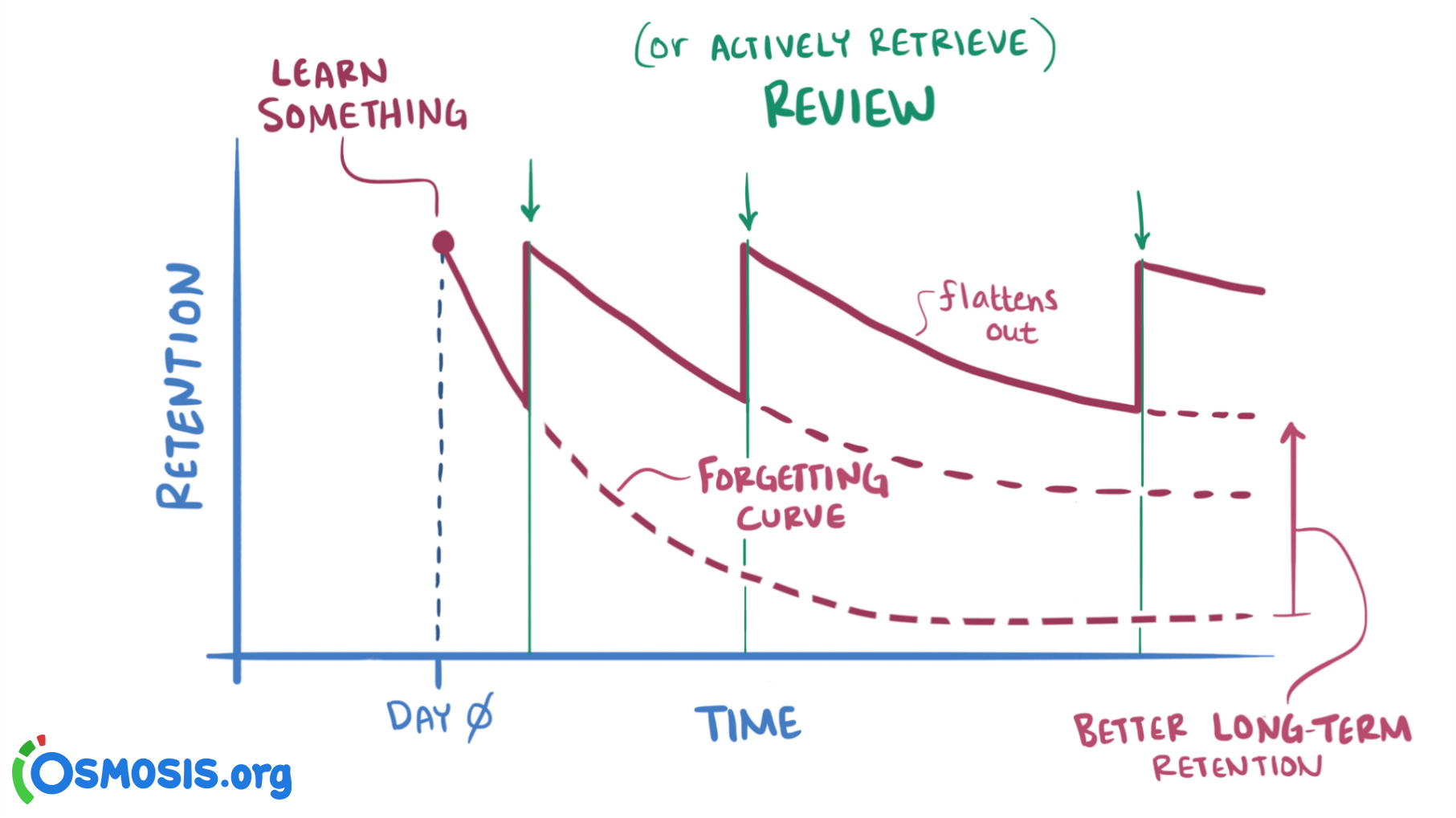
It’s a long journey. Optimize YOUR LEARNING CURVE.
Create and strengthen neural pathways.
Whether it’s learning a language or mastering jiu jitsu, you have to establish new neural pathways in the brain. Doing so isn’t easy. After being exposed to something new, that weak connection in the brain can wither away, causing you to forget what you learned. Or, it can be reinforced before that happens - leading to strong retention, and, over time, mastery.
Roll was designed with simple tools that will help you reinforce neural pathways and improve memory retention.
Spaced Repetition.
We all know repetitions lead to retention. The more repetitions, the better. However, spacing repetitions across multiple days in the short term has been proven to lead to stronger retention, and a lower chance of forgetting.
Roll’s Focus Rings are designed to give you an easy way to implement spaced repetition into your training. By adding a new or struggling skill to your Skill Focus, you’ll be armed with a plan for what to work on, inside or outside of class.
In a perfect world, we could train every day, and Roll could have Skill Focus recommend what to train each day of the week for the optimal spacing intervals. But let’s be honest - that isn’t practical. Most of us don’t train every day, and our schedules aren’t always the same week to week.
Focus Rings are a simple way to revisit a concept over consecutive training sessions in the short term, which will improve retention.
Roll also sends you intermittent memory notifications to review an instructional video of a skill in focus. By watching and visualizing the move, it’s just one more opportunity to recall the move and reinforce that neural circuitry.
Learn more about the spacing effect.
Physical vs. Observational Practice.
While physical practice intuitively beats “observational practice,” watching an expert perform a skill will help you learn better than nothing at all. What’s even more interesting, physical practice combined with observing an expert is more effective than physical practice by itself.
When is the best time to perform “observational practice?” Well, it depends. Research shows that viewing an expert video at the moment you need clarification is more effective than simply viewing the video before or after training. Makes sense!
Roll makes instructional videos a core feature of the platform. Trying to remember a detail of a move? Open the app and tap the skill for a breakdown. Working something with a buddy before class? View the video right then and there instead of waiting to look it up later.
Studies have even shown that ‘mental practice,’ or imagining yourself performing the skill reignites the same neural pathways as physically performing it, reinforcing the neural pathways.
Learn about more observational practice and mental practice.
Self-Directed Learning.
School curriculums aren’t designed around the individual. They have to teach the whole class, and they have a lot of material to work through. In addition, each person in class is at a different level when it comes to the skill being taught.
With Roll, you now have a tool to focus on your individual strategy. Compare this with the ‘just show up to class’ method, where you may learn something new one week, then potentially lose it as months pass before seeing it on the mat again.
Effective training ultimately relies on the individual student taking it upon themselves to revisit what they’ve learned in class, and Roll give you the perfect platform for doing so.
Learn more about the benefits of self-directed learning.



